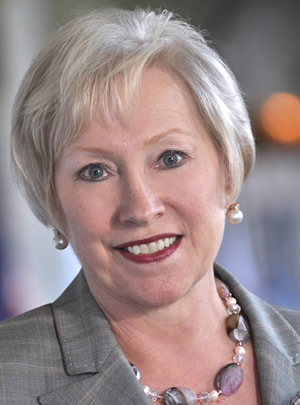Q&A with Nancy Zimpher, National Association of System Heads director
March 22, 2022

Throughout her career, Dr. Zimpher has embraced the expansive responsibilities of public higher education in the 21st century. “To educate more people and to educate them better” is at the center of her collective-impact theory of action, which she exercises in several key areas, including building on university strengths to drive regional and local economic development; creating seamless cradle-to-career education pipelines in every community; and systemically transforming teacher education into a rigorous practice that reliably creates great teachers for every classroom and student.
Dr. Zimpher will hold a session, How Collaboration Leads to Innovation Through a State Culture of Systemness, at the 2022 Student Success Summit, April 11-12 in Louisville. Register for the summit here: cpe.ky.gov/studentsuccess.
What is systemness and what are its practical applications in higher education?
Systemness is the coordination of multiple components that, when working together, create a network of activity that is more powerful than any action of individual parts on their own. Rather than seeing systems as collections of disparate actors, systems can be coordinated actors who leverage their power to convene and facilitate, along with their governing and policy making authority, to build collaborations to support students and campuses. The whole is greater than the sum of its parts.
The most obvious benefit of a concept like systemness is teaching us all how to work together more effectively. Systemness is a concept that really requires collaboration and collective impact.
We’ve talked about the value of systemness within statewide higher education systems. Does this also apply across different stakeholders like employers and the K-12 system?
I really learned about collective impact when I was working as a university president in Cincinnati with our K-12 partners. We were obviously interested in getting more kids to graduate high school and head straight to college. What we learned over a decade or more of work is how working together we could increase the ability of both our school districts and our colleges to get more students into college. That notion began to be called collective impact. It brought multiple sectors together to make sure the pipeline from high school to college was seamless. So collective impact and systemness can work at any level and across any systems, and I guarantee it will result in a more thoughtful outcome.
Rather than seeing systems as collections of disparate actors, systems can be coordinated actors who leverage their power to convene and facilitate, along with their governing and policy making authority, to build collaborations to support students and campuses. - Nancy Zimpher
COVID brought new and difficult challenges to colleges and universities, and, in many cases, they came together to share resources and strategies for addressing those challenges. Do you see the momentum of that collaborative spirit continuing?
We learned a lot from COVID; not only was it a health crisis, but it also exposed racial inequities and economic pitfalls. I don’t think we’ll ever be the same. We saw how these factors interact with each other, and I think we are absolutely required to take the lessons of learning how to work more effectively together as systems and apply them to solve our most challenging problems. We’ve learned that a leadership body or system head is a good cover and helps people work together safely. That was an important lesson too.
Coordinating boards and convenors like CPE and NASH have a role in creating systemness through setting goals and metrics across campuses and communicating a unified vision. What is the role of college and university leadership in encouraging cross-campus collaboration?
I’m a huge advocate of the kind of leadership that a council like CPE can do to guide people to better collaboration. But to dance takes two or more—we need everyone on the dance floor. So, it flows both ways. It is imperative for people who lead these integrated and statewide systems to be at the table, and it is also on us to be good team players within our organizations. The wisdom of systemness has to apply to all parties or it won’t be collaborative or collective.
You’ve written about the power of systemness to expand higher education’s role in addressing societal issues like the health care crisis, racial injustice and economic recovery. Why is higher education uniquely positioned to help take on these challenges?
I think we can all agree that there is nothing more powerful than educating more people and educating them better. In fact, I’ve heard the pundits say that is the best bet any country can make. I think what COVID exposed is the inequities that occur when some people don’t have access to education. We know that if you are better educated, your children will be better educated, you are all going to be healthier, you are going to be better citizens. We have a lot of work to do to make sure that everybody has access to an advanced education. That is a great lesson to learn from a horrible situation.
Last Updated: 3/22/2022
